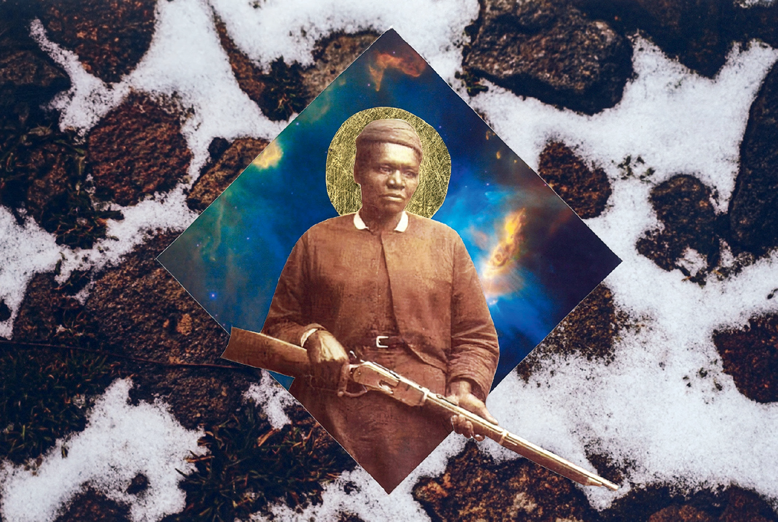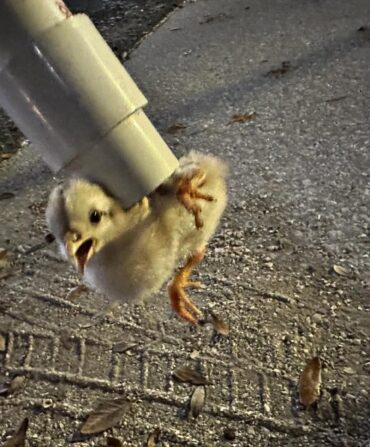I was looking for a way to survive when I remembered Mary Fields. The atmosphere in Missoula, Missoula, where the University of Montana had invited me to teach as a visiting writer, had become my adversary. The deep cold that greeted me upon my arrival in January would not let up. When it wasn’t snowing, there was mud. When the mud dried, there was dust—a fine coating everywhere, including inside my nostrils and mouth.
As the semester wound down, I found myself thousands of miles from the Appalachian spring I adored. My bones knew it was time for the trilliums to bloom in the foothills. Oconee bells, too, and rocky shoals spider lilies. On this side of the country, the crocuses had yet to emerge from the snow. I tried to cook away my homesickness—shrimp and grits, yellow-eyed peas, even collard greens when I could find them. I filled my house with flowers to beat back the gloom, but the feelings of dislocation held strong.
Then Fields crossed my mind.
Mary Fields, also known as Black Mary or Stagecoach Mary, was the first African American woman given a “star route,” or a contract to deliver mail, in the United States, and eventually became so beloved in Montana that an entire town mourned her death. As with other larger-than-life figures, the already extraordinary facts about her have been exaggerated into myth and legend. What we know: Fields was born into enslavement, most likely in Hickman County, Tennessee, sometime in the early 1830s. After Emancipation, she left Tennessee. Stories vary as to what she did before she resurfaced in Montana in 1885—worked on riverboats along the Mississippi, perhaps. Writers can’t even seem to agree on her physical stature; one account describes her as short and fat; in others she cuts an impressive figure, six feet tall, two hundred pounds, which might say more about how Montanans came to view her: an indomitable woman, a carrier of news and knowledge, an enlarger of the common day.
Romanticized tales of the American West often omit stories of Black scouts, fur trappers, miners, frontiersmen, and cowboys, and rarely mention women at all. That’s why a chapter about Fields in a book I read about Black people on the Western frontier stood out—she carried the mail, as my own mother long has back in South Carolina, and the story came with a compelling photograph. In her hands, she cradles an 1876 Winchester saddle ring carbine, a warning to wolves and bandits. I had a feeling that for Fields and for me, reality lay a world away from what pop culture had to say about who we were and what we were capable of: Black, Southern, out of place, and playing tug-of-war with our environments. To divine how this gun-toting, pants-wearing postal carrier became one of the rare Black women to arise in Western iconography, how she had not only survived this place but came to love it, I decided to retrace her steps—or rather, her mail route.
In 1895, when she was in her early sixties, Fields obtained her post office contract. For eight years, she drove goods and letters from Great Falls, Montana, into Cascade, over to St. Peter’s Mission, and then back again. When the snow fell too deep for her stagecoach to traverse, she strapped on snowshoes to journey on foot. In the wet months, downpours could cause landslides or wash out her route. During the dry times, prairie fires and dust storms loomed. Even when the weather complied, she still had to contend with robbers and wildlife—once, when her stagecoach overturned, leaving her stranded, she fended off wolves with her shotgun. Records say she never missed a day.
A late spring storm delayed my trip by dumping two feet of snow. After all, I only had a station wagon to substitute for Fields’s stagecoach—and I’d soon learn that even an all-wheel drive was no match for the deep, serpentine ravines she frequented. One Sunday as the sun climbed over Mount Sentinel, I decided to go for it.
As soon as I turned off onto dirt roads, I was ready to give up. The wide-ranging, unpredictable Montana that Fields inhabited is now hemmed up and fenced in, but it still contains wildness. Snow crammed the mountain passes, bighorn sheep clung perilously to the sheer cliffs, and deer seemed out to prove they were unafraid of cars. I hadn’t had cell service for hours, and the unpaved path out to the mission and over to Cascade seemed to snake up, over, and around buttes into eternity. I eyed the ravines, worrying I’d end up in one, never to be found. How did Fields do this every day, when even modern technology and machinery couldn’t reassure me?
Eventually my station wagon began to wind down a flatter, gentler path toward St. Peter’s Mission, ruins all that remain of the stone convent. Fields befriended the Ursuline nuns there, and much of what we know about her comes from their records. She first arrived in the state, in fact, to nurse back to health one of those nuns, Mother Amadeus—some say she might have been the daughter of Fields’s enslaver; others, the sister of a judge Fields met on a riverboat. When Mother Amadeus recovered, Fields decided to stay.
She clashed with the nuns, however, over their treatment of the Indigenous children under their care. She saw some of what she had endured as an enslaved person reflected in the punishments meted out in order to separate the youth from their culture and homelands. She also flouted gender norms by making buckskin clothing and wearing pants under her dresses. After an altercation, Fields moved to Cascade and landed the mail contract that, due to her loyalty, dependability, and fearlessness, made her a legend. When she died, the locals banded together to put on one of the largest funerals in the town’s history.
As the sun started to set over a nearby butte, I searched for Fields’s grave. Per usual, accounts differ—one has her interred along the trail to the mission, an etched boulder marking her resting place; another cites an unmarked grave with a homemade tin cross. Instead, I found Fields in Cascade’s Hillside Cemetery. I was glad to know she wasn’t alone out there somewhere.
Visitors have created an altar of sorts in front of her pink-rock headstone, leaving yellow flowers, a nod to her affection for her garden; a mini bottle of whiskey, since she liked a good drink and was the only woman allowed at saloons in town; and a baseball, because she adored the sport and often gave flowers to local players. I riffled through my belongings for something I could offer her, my fingers finally fumbling over the stamps I keep in my wallet so I can send friends postcards from my travels.
The stamps I choose echo my personality and mood. In that deep winter, at the post office counter, I had asked for anything with flowers: dahlias, dogwoods, tulips, lotuses. For Fields, I plucked out a stamp with an image of a pink Asiatic lily. Lilies often signify devotion. Pink lilies indicate admiration. The bulbs, appropriately, require a cold, dormant period before they can bloom.
I laid the lily down, assuring Fields that the tens of thousands of mail carriers now crisscrossing the country still stood by the creed she lived out: Neither snow nor rain nor heat nor gloom of night stays these couriers from the swift completion of their appointed rounds. I recounted a little of Mom’s life as a postal carrier, of the time she had to lie down in a ditch to take refuge from a tornado, of her determination to go to work, even in the occasional winter storm. I laughed because now I knew true winter.
I told her a little about me too. How I’d come out West seeking opportunity, but I wasn’t sure I could learn to like this place. How I admired my whip-smart, resourceful students but struggled to connect with the world outside the university. How I couldn’t shake the cold, or my desire for spring’s flowers. I asked her if the hard work, the longings and missings, had been worth leaving home for. Then again, according to one record, Fields went back to Tennessee just once. She only made it a week before returning to Montana.
My trip proceeded to Great Falls, where the mail once arrived by train and by boat along this peaceful stretch of the Missouri River. A place of departures and arrivals. I realized that my journey, and Fields’s, and even my mama’s, were about making do, and getting by, and trying to find the beauty in between. Like Fields on her stagecoach, perhaps if I leaned into the landscape as it was and embraced whatever circumstances came my way, I might flourish as she had. And even if not, I would still have a hell of a story.








